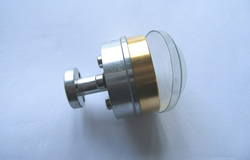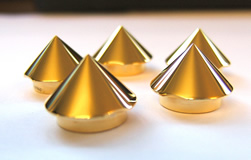Assemblies
We can fabricate, polish and coat mirrors from customer supplied material, working to customer’s drawings or to our own designs using Zemax and Solid Works.
Our manufacturing techniques lend themselves to the efficient production of small numbers of optics, even just one optical component, very cost effectively. Because we manufacture almost entirely in house, delivery times are quick as well.
We are proud of our flexibility – we regularly liaise with our customers about mirror materials, optical coatings, mechanical and optical tolerances, even adapting existing parts to meet the demands of their applications…just about everything is standard to us!
Collimators
For collimating infrared lasers (like CO2 flying optics cutting systems) a reflective beam expander is a robust device and is simple to align and adjust. With careful optical design, inexpensive spherical mirrors can be used and still give near diffraction limited results.
Gold coated mirrors have high reflectivity in the visible and infrared, so a visible alignment laser can be used to safely and accurately align the beam expander. We have designed and assembled beam expanders with magnifications from X1.2 to X10 and apertures as large as 125mm. For customers who have their own mechanical capability, we can simply supply the optical design and optical components.
Spherical concave and convex mirrors are also used as rear mirrors in resonators and in adjustable beam path devices. We have nearly 1,000 sets of tooling for curved mirrors from 10mm Radius of Curvature out to 100 Metres.
Mirrors with mounts
If you are using traditional optic plus mount set-up, we may be able to save you money, and weight. By designing in adjustment and alignment features and by using our creative polishing and coating technology, we can incorporate mounting holes, threads, flanges, dowel pins, alignment holes, clamps, O ring grooves etc. in to a single monolithic mirror, therefore doing away with the need for a separate mount.
This can:
- Reduce component count and cost.
- Improve assembly time, especially for a field serviceable item.
- Reduce size and weight (SWaP).
- Improve mechanical stability and reduce alignment errors.





-thumb.jpg)
-thumb.jpg)
.jpg)